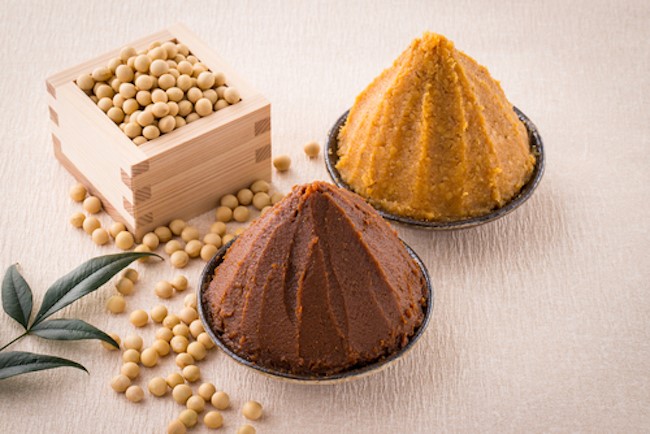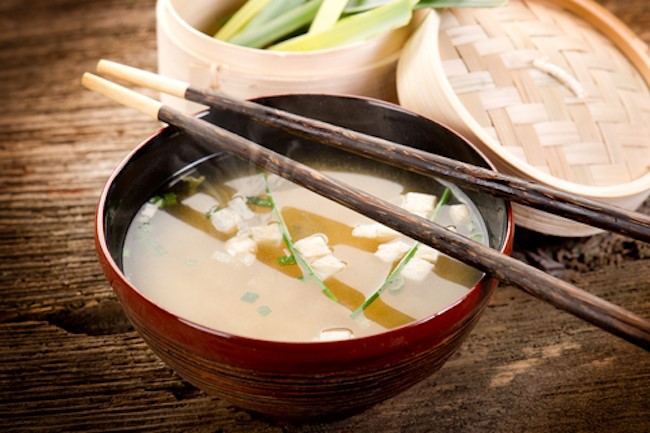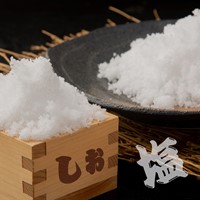What Is Miso? A Guide to Japan's Essential Ingredient

This page contains affiliate links.
Many people who enjoy Japanese food will be familiar with the iconic flavor of miso. However, miso is much more than just the main ingredient of its namesake soup. It’s a key ingredient of many different Japanese foods and an important contributor to the unique tastes of Japanese cuisine. Keep reading as we delve further into the background and benefits of miso, as well as the many different types and how to use miso in your home cooking.
20 Popular Japanese Seasonings, Sauces, and Condiments >>
What Is Miso?
So, what is miso? Miso is a simple fermented paste that is made from soybeans, salt, and fermentation starters. In some varieties of miso, other grains such as rice or barley are also added. Once the ingredients are mixed, the miso is fermented over a period of a few months up to two years.
Miso paste can be used as a base for different Japanese soups and stocks or to enhance and improve the flavor of many foods. Due to the culture of local delicacies in Japan, there are many varieties of miso, some of which we will explore below.
Types of Miso

There are four main varieties of miso in Japan. As mentioned above, some types of miso have a grain added. This makes the four varieties:
- Rice miso
- Wheat/barley miso
- Bean miso
- Mixed miso
The majority of miso in Japan falls into the rice miso category, making up 80 percent of the overall production. Wheat/barley miso is often made in southern prefectures while bean miso is prominent in central areas like Nagoya. Mixed miso refers to any miso that is a combination of the three above or miso that isn’t categorized as having rice, wheat/barley, or beans.
Color Classification
Miso can also be classified by its appearance. The final color of miso usually falls into one of three categories. These are:
- Red miso
- Light-colored miso
- White miso
The color is determined by a range of factors, including the soybean used, the amount of koji (fermentation starter) added, and even whether or not the mixture was stirred during fermentation.
Taste Classification
As well as ingredient and color classification, miso is also categorized by taste. Miso usually falls on a scale between sweet and strong, with “low-salt” as an additional category. The strength of miso depends on the ratios of rice/barley to soybeans and the amount of salt used. If there is a consistent amount of salt and a high ratio of rice/barley to soybeans, the flavor becomes sweeter.
Miso in Different Regions of Japan
Different types of miso are made in different regions of Japan, and therefore, preferences also differ by region.
As mentioned above, bean miso is largely made in the Chukyo region, and wheat or barley miso is made in Kyushu, Chugoku, and some parts of Shikoku. However, the majority of the country prefers rice miso. While this is a general breakdown, the actuality is much more nuanced. There are said to be over 1,000 varieties of miso, all varying in ingredients, taste, color, and subtlety.
Miso Home Recipes

Miso paste is a very versatile ingredient and can be used in a variety of ways for different meals. Of course, the most well-known recipe is miso soup, which is actually quite easy to make, requiring only dashi (Japanese soup stock), miso paste, and your choice of vegetables, tofu, etc.
Miso is also ideal to use as a base for soups, stocks, stews, and sauces as it is easily diluted in water. Rich-flavored, red miso is great as a marinade or in stir-fries.
One important thing to note when cooking with miso is to always add miso at the end of the cooking time. The longer miso stays in the heat, the more flavor it loses.
Read More: Free English Websites for Japanese Food Recipes
The Miso Soup below is all "additive-free". Click the image(s) to see details / order.
Why Is Miso Known to Be Good for Your Health?
Miso is often thought to have a range of health benefits. Some of these are well known, such as improved gut health because it’s a fermented food. However, lesser known benefits may include the promotion of certain vitamins, such as B12 and K. The probiotic bacteria in miso is said to help with the immune system. Some sources also say that miso can reduce the risk of some cancers, such as breast cancer, due to the antioxidants. Miso is also said to help with decreasing cholesterol levels.
Overall, miso may provide a number of health benefits making regular consumption a potential boon to one’s health.
The History of Miso
Miso is thought to have been a key food in Japan for over 1,300 years. There are various theories on its origins, although most sources agree that a fermented soybean paste was first brought to Japan in the 6th or 7th century, either from China or the Korean Peninsula. Both Korean and Chinese cuisine also utilize fermented soybean condiments, albeit with very different flavor profiles.
During the early days of miso in Japan, it was considered a luxury food, and was not available to the common people. Through the Kamakura Period and into the Muromachi Period, miso soup was developed and incorporated as part of standard meals, as well as other miso-based foods. By the Edo Period, miso was a part of daily life for Japanese people and was considered a staple food. In fact, it was so popular during this period that production couldn’t keep up with demand. In the modern day, it is considered one of the cornerstones of Japanese cuisine.
Buying Miso Online
These Miso are either organic or additive-free. Each miso has a different taste and texture. You will undoubtedly enjoy the variety of flavors.
Click the image(s) to see details.
Make Miso the Gateway to Exploring Japanese Cuisine
Anyone who has visited Japan or eaten Japanese food frequently will understand how important miso is as a component of Japanese meals. It’s rich flavor paired with its simplicity make it a great way to introduce yourself to Japan. For more information on Japanese ingredients like rice, natto, and more, be sure to check out more of our Japanese food guides.

























